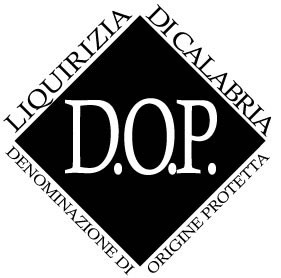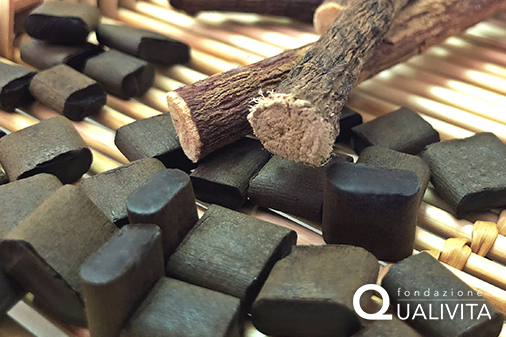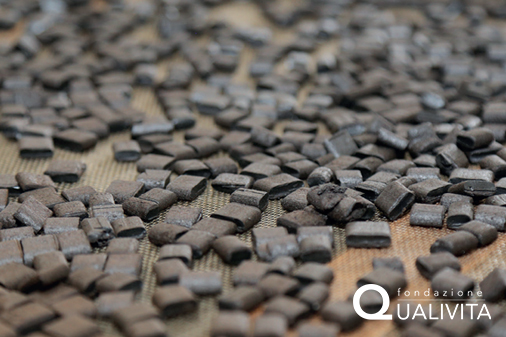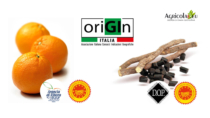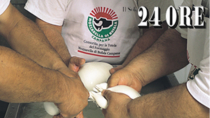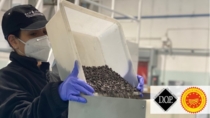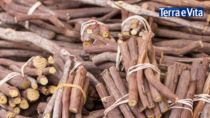Description
Liquirizia di Calabria PDO is obtained from cultivated or spontaneous plants belonging to the Glychirrhiza glabra species, deriving from the variety locally known as “Cordara”. The varieties are Radice Fresca (Fresh Liquorice Root), Radice Essiccata (Dried Liquorice Root) or Estratto di Radice (Liquorice Root Extract).
Production Area
The production area of Liquirizia di Calabria PDO is within 210 municipalities situated at an altitude of up to 650 m above sea level, in all the provinces of the Calabria region.
Production Method
Before the liquorice crops are planted, the soil must be ploughed deeply and the liquorice root cuttings must be resowed. Catch cropping is permitted in autumn and winter, allowing the production of roots every 3 to 4 years, and any necessary work on the soil is permitted as long as it does not exceed a depth of 20 cm. Forages, vegetables and legumes can be cultivated together with the crop. Liquorice is a nitrogen-fixing plant and therefore increases the fertility of the soil. Harvesting takes place year-round. Spontaneous liquorice plants, which are wide-spread in Calabria, may also be picked, as long as they are registered with the body responsible for the controls, therefore becoming part of the PDO network. The operations carried out to remove the roots must not exceed a depth 60 cm. The roots destined to be sold dried can be dried outdoors in ventilated, sunny areas, inside in a well-ventilated place, or in ventilated ovens at a temperature that does not exceed 50 °C, so as not to modify the characteristics of the product. To extract the juice, the liquorice roots are cut, crushed, enervated and rinsed exclusively with water.
Appearance and Flavour
Liquirizia di Calabria PDO Radice Fresca is straw-yellow in colour and has a sweet, aromatic, intense and persistent flavour; the colour of the Radice Essiccata varies between straw-yellow and ochre yellow, and it has a sweet, fruity and slight astringent flavour; the Estratto di Radice is dark terracotta brown to black in colour, and has a bitter-sweet, aromatic, intense and persistent flavour.
History
Liquorice is a tradition in Calabria, and over the centuries this product of the land and culture has gained increasing importance. There are numerous historical documents showing that this plant was already widely spread and used during the 17th century, and that by the following century there were crops along the entire Ionian coast, as well as in the Crati Valley and large expanses of areas on the Tyrrhenian coast.
Gastronomy
The fresh root, dried root and root extract varieties of Liquirizia di Calabria PDO are best kept in a cool, dry place, away from direct heat sources. The fresh root is mainly used for the extraction of the juice, which is recognised for its numerous properties, including digestive, detoxifying, and antiseptic. It is widely used in various industrial sectors, including pharmaceuticals and confectionery, as well as in herbal science and cooking.
Marketing
The product is marketed as Liquirizia di Calabria PDO, in the following varieties: Radice Fresca, Radice Essiccata and Estratto di Radice. It is available in various forms, such as sticks, pieces and flakes. It is sold in packaging made of cardboard, glass, metal, ceramic, polypropylene and other suitable materials, in weights varying from 5 g to 25 kg.
Distinctive Features
Liquirizia di Calabria PDO differs from other similar varieties, above all for its chemical-physical composition: the glycyrrhizin content is strikingly lower, as is the sugar content. It also has other components that are beneficial to our psychological-physical well-being, such as liquiritigenin, isoliquiritigenin and licochalcone A, the latter being significantly high.



